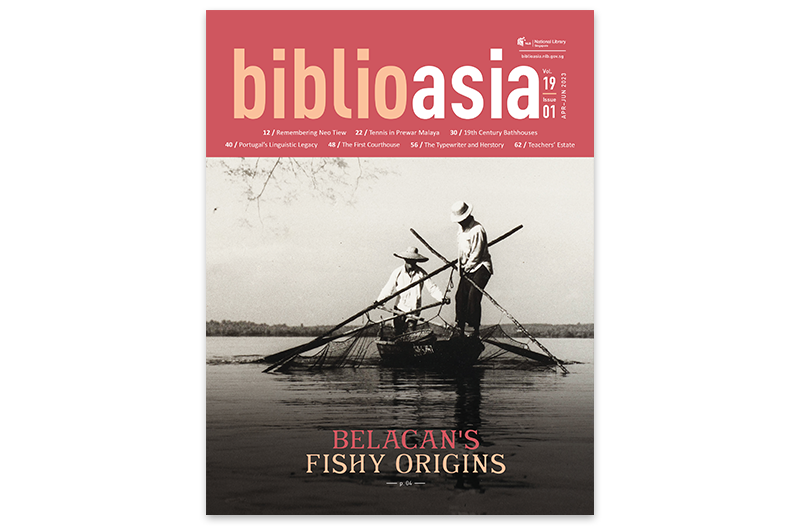BiblioAsia Apr–Jun 2023
Belacan. Terasi. Kapi. Bagoong. These are some of the names that refer to shrimp paste in Southeast Asia. In the cover story, find out how early Europeans to the region were repulsed by it, although the locals swear that the condiment gives a kick to any dish.

Belacan: Caviar? Or Vile and Disgusting?
Fermented shrimp is a staple in many cuisines of Southeast Asia, though it takes some getting used to. Toffa Abdul Wahed. (PDF)
Neo Tiew: The Man Who Built Lim Chu Kang
The opening up of Lim Chu Kang owes much to the efforts of Neo Tiew, who helped clear the land and later became the headman of the area. Alvin Tan.
(PDF)
Khoo Hooi Hye, Lim Bong Soo and the Heyday of Malayan Tennis
Two remarkable athletes served up a storm to make Malaya a tennis power to contend with during the interwar years. Abhishek Mehrotra. (PDF)
Order and Cleanliness: Singapore’s Public Bathhouses of the 1880s
Three public bathhouses at Ellenborough Market, Canton Street and Clyde Terrace were built by the Municipality in the late 19th century. Jesse O’Neill. (PDF)
Portugal’s Linguistic Legacy in Southeast Asia
While Portugal may not have had a large presence in this region, remnants of the Portuguese language continue to linger on, in some places more than others. João Oliveira. (PDF)
Which Was Singapore’s First Courthouse?
Singapore’s former Parliament building, known today as The Arts House, was used as a courthouse between 1828 and 1939. But before 1828, legal hearings in Singapore were conducted in at least three other venues. Kevin Y.L. Tan. (PDF)
Women and the Typewriter in
Singapore’s Herstories
The humble typewriter helped women become better educated, enter the workforce and contribute to society. Liew Kai Khiun.(PDF)
Terraces on Tagore: The Curious Origins of Teachers’ Housing Estate
The Singapore Teachers’ Union wanted a clubhouse. It ended up building a housing estate. Sharon Teng. (PDF)
New Books on Singapore History
New books available in the National Library’s collection. (PDF)

